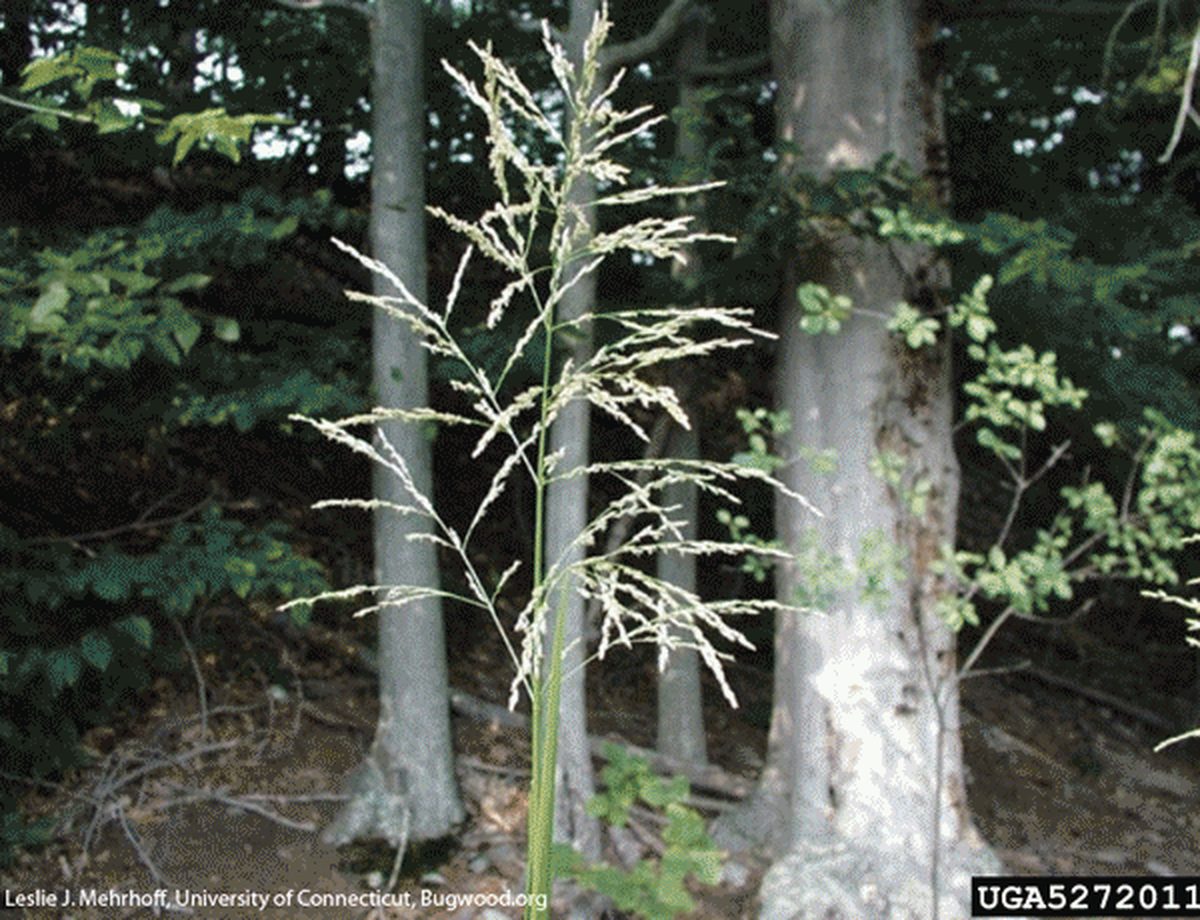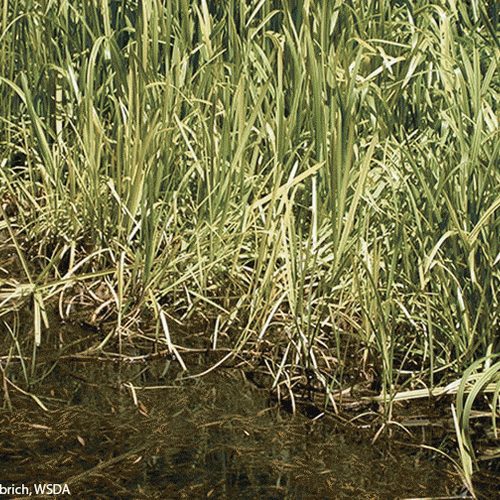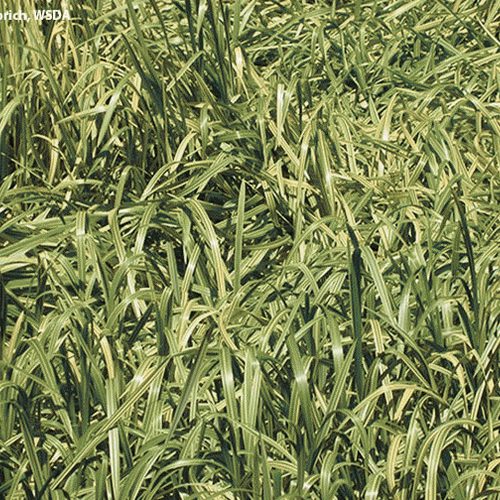Reed Sweetgrass
Glyceria maxima

Family: Poaceae
Other Common Names: tall manna grass, reed grass
Weed class: A
Year Listed: 2006
Native to: Europe and Asia
Is this Weed Toxic?:
livestock
Legal listings:
WAC 16-752; WSDA Quarantine list (prohibited plant list)
Why Is It a Noxious Weed?
Reed sweetgrass is an aggressive aquatic weed that produces an extensive network of underground roots and rhizomes that can reach one meter deep. It forms dense monotypic stands, crowding out native vegetation. It is a serious threat to our wetlands.
How would I identify it?
General Description
Reed sweetgrass is a perennial, rhizomatous wetland grass, sometimes variegated in appearance, reaching a height of around 8 feet (2.5 meters) tall.
Flower Description
The flowers are arranged in a branching flower cluster, widest at the base. Typically flowers are produced during the spring and summer and consist of narrow spikelets that range from yellow to green with a purple tinge.
Leaf description
Leaf blades are flat, shiny and lightly grooved by a prominent midvein. They are typically 8.6 to 11.4 inches long by 0.25 to 0.79 inches wide. Leaf margins have short stiff hairs. In the variegated variety, the blades are longitudinally striped.
Stem description
Stems are unbranched and often reddish at the base.
Fruit Seed Description
Seeds are small and dark brown.
May Be Confused With
American mannagrass (Glyceria grandis) is similar in appearance, although is much smaller in height. If you need help with identification, contact your local county weed coordinator.
Where does it grow?
It typically grows along rivers, dams, streams and ponds. Please click here to see a county level distribution map of reed sweetgrass in Washington.
How Does it Reproduce?
Sweet reedgrass reproduces by seed and by rhizomes.
How Do I Control It?
General Control Strategy
For all control methods, the infested area needs to be monitored for new shoots and treated as needed.
Mechanical Control
Small patches of sweet reedgrass can be dug up, as long as all the roots and rhizomes are removed. Large infestations may be excavated.
Cultural Control
Small populations can be effectively controlled by tarping with black plastic. Plants can be substantially damaged when recently mowed stubble is flooded. Another option is to till the affected soil in autumn, provided that the winter is cold enough to kill the roots and rhizomes through desiccation.
Biological Control
.
Herbicide Control
Selected aquatic herbicides can also be very effective. Because herbicide availability and regulation differ between states, we recommend the Washington Department of Ecology website for information on aquatic weed management and herbicides, or contact your county noxious weed coordinator.
For More Information
See our Written Findings for more information about reed sweetgrass (Glyceria maxima).
King County NWCB Fact Sheet on reed sweetgrass






